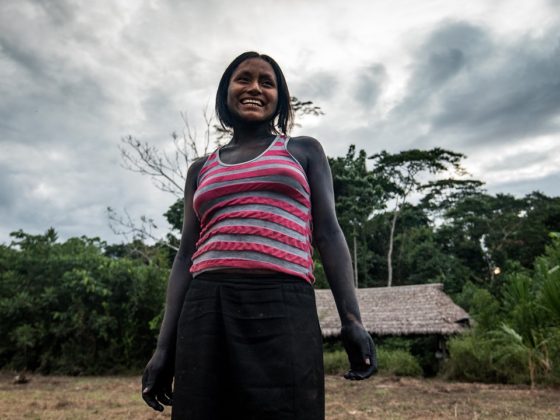Two years in the making, The Manú Project culminated this past April in a thirty-day expedition to document the stories of indigenous communities living in the rarely traveled Restricted Area of Peru’s Manú National Park. Our team of six visited the most remote areas legally accessible within Manú, a UNESCO recognized Biosphere Reserve and World Heritage site.
Our project was to observe and explore how connectivity, park regulations, and an evolving relationship with the outside world are affecting these communities. We also sought to give these people a chance to voice their own views on their lives and future. All captions cred out team: Lina Collado, Kevin Floerke and Shelby Lynn Johnson. Photos by Lina Collado.
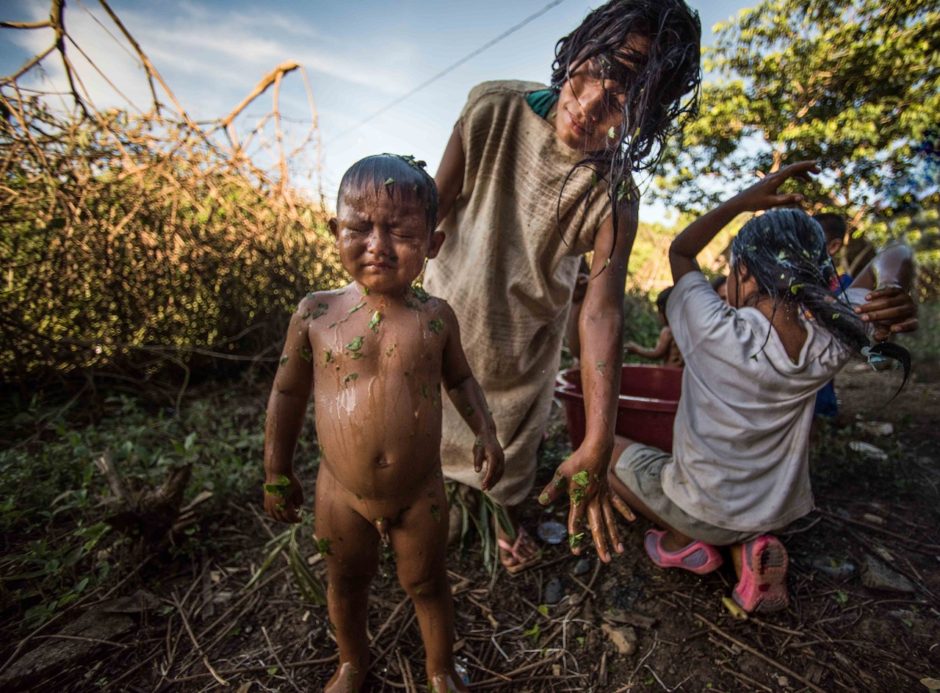
The indigenous community of Santa Rosa de Huacaria is in the Madre de Dios region of the Peruvian Amazon. The president and curandero of the community, Alberto, prepares an herbal bath of Lambranzillo leaves that is believed to provide good luck, reduce stress, and remove negative energy. After we wash our heads with the fragrant water, other families from the community come to put their heads into the special bath. It is customary to not remove the leaves from your body, but to let them fall off naturally as they dry. Children who are small enough are dunked entirely for the full experience!
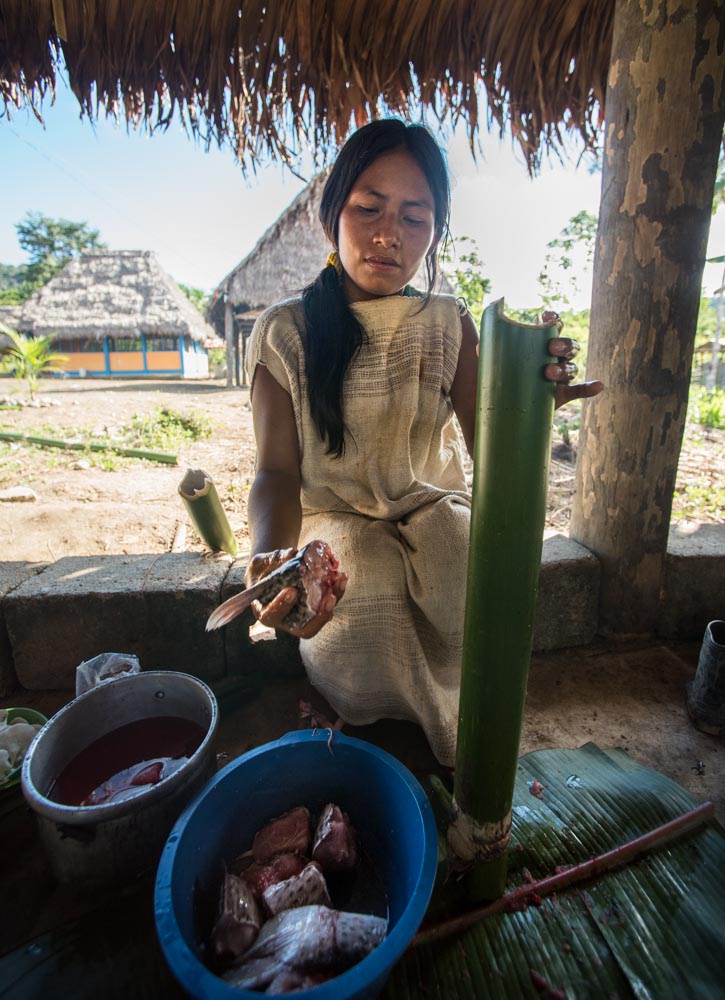
Juana, a 15 year old girl living in the Native Community of Santa Rosa de Huacaria, is preparing a traditional meal of catfish which is first cleaned, then wrapped in a special, flavorful leaf and then put over the fire. Juana and her Matsigenka ancestors have been following these steps to prepare and cook the fish for centuries. However, the schooling she receives is as modern as the shirt and flip flops she wears under her traditional cushma.
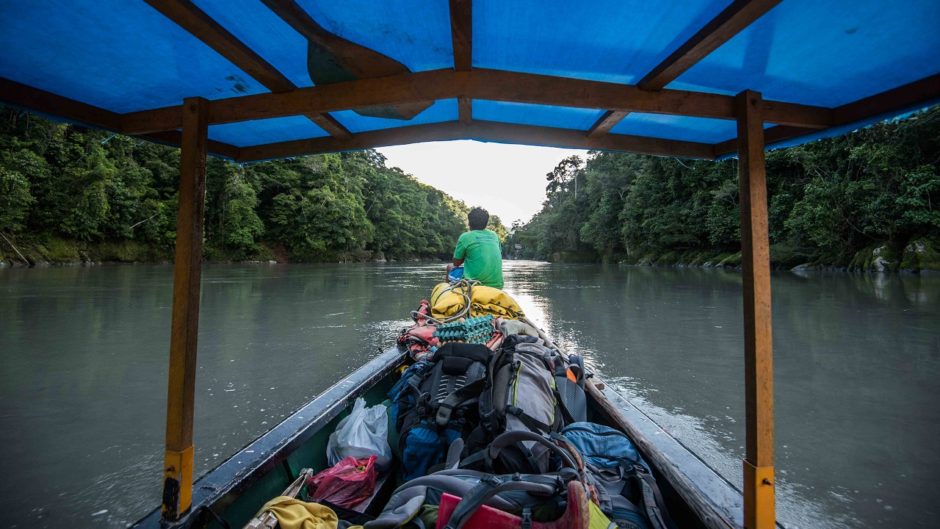
After traveling for hours and hours along the edge of the Peruvian Amazonian basin, the team reaches Amarú Mayú Ecological Reserve. This is our boat captain, Mario, a 19-year old young Peruvian man who has been guiding the Peruvian Amazon for the last 3 years. From this point on, along with our boat captains, cook, and guides, the team begins a long voyage that will reach some of the deepest parts of the Peruvian Amazon.
Intermission
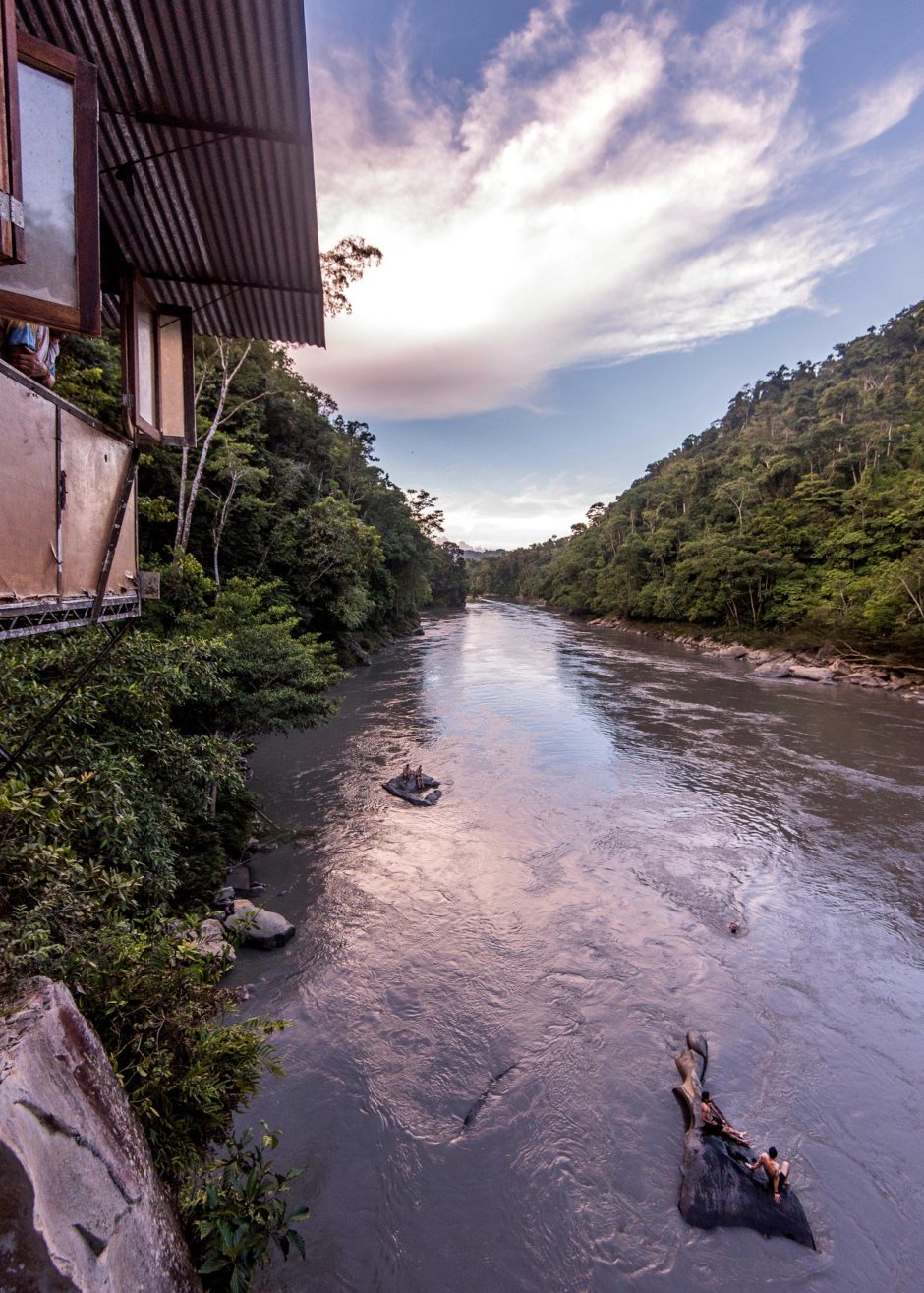
This is Amaru Mayú Ecological Reserve, a 1,000-acre volunteer-based reserve founded and managed by our guide and team member, Dante Karin Nuñez del Prado. He was instrumental in the creation of the nonprofit private reserve in the Peruvian Amazon, protecting these acres from illegal logging, mining, poaching and agriculture. Some of the last remaining rubber trees that survived the Rubber Boom are found nestled in this reserve. We were fortunate enough to stay here for a total of four nights during our journey to Manú National Park.
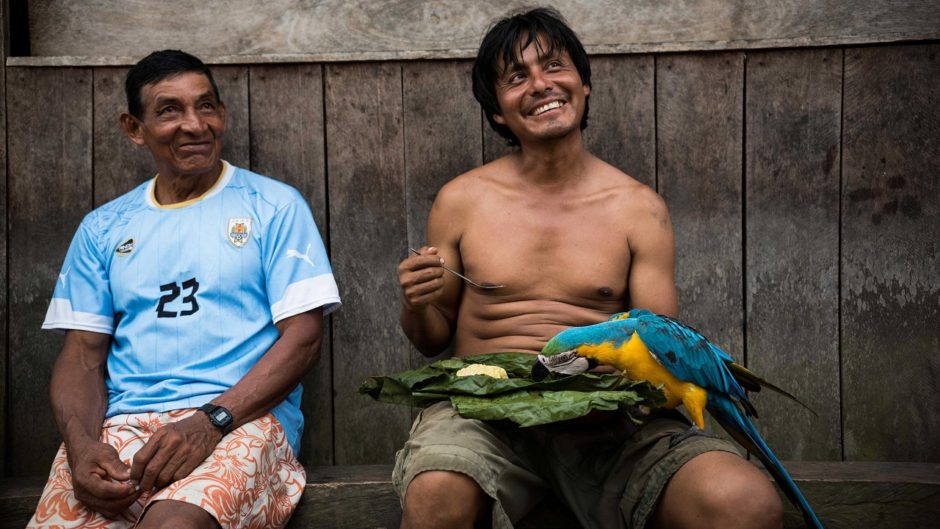
While visiting Atayala, on our way back to Amaru Mayú, we encountered these men enjoying a nice lunch along with their pet macaw. Julio, the man feeding the parrot, tells us that the macaw began to visit him one day, and has become his special friend ever since. Macaws, along with ducks, have been one of the first animals to become domesticated for several indigenous communities we visited along our journey. Today the macaw is found either as part of an indigenous family or flying in large groups in an area that has nearly 10 percent of all bird species on Earth.
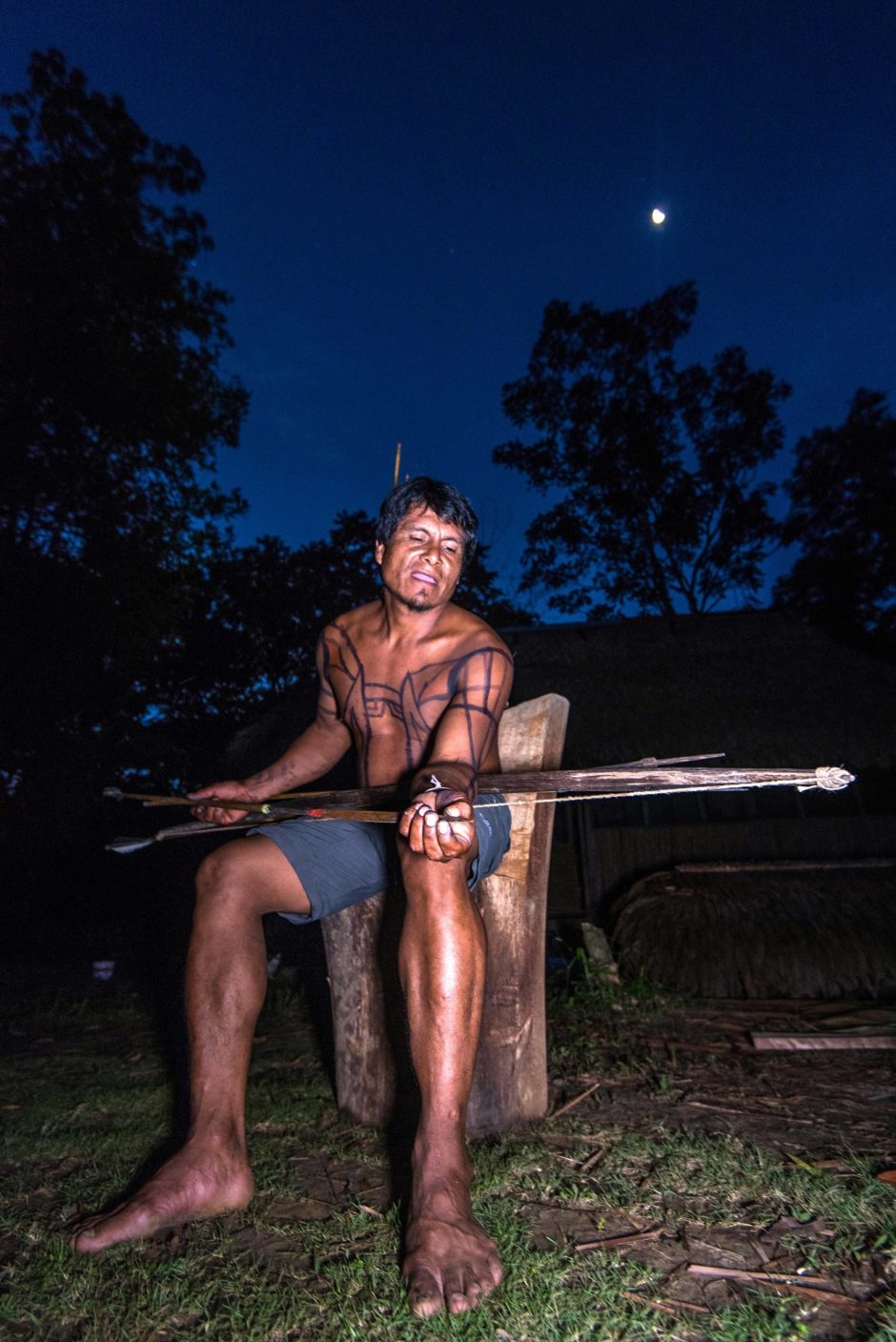
Walter Yuri Visse, a 36 year old bachelor living with his aunt and uncle shows us all of the arrows he has made. Each one designed for a specific hunt and painted with their traditional herbal-based tint, which also acts as a bug-protectant and healing ointment. Walter helps his family with the maintenance of their eco-lodge, which has access to a natural hot spring along the border of the Manú National Park. He talked to us about his past family members, revealing stories of creation and stories about colonos (a term for white people) entering their lands for the first time, his great-grandfather as their community leader, and about medicine men (or curanderos). An incredibly vast difference between two generations could be seen when Walter gave us his email address for us to keep in touch and send him this picture -- whenever he travels to Salvación (a 7-hour boat journey and 30 min car ride from Atayala) he checks his email.
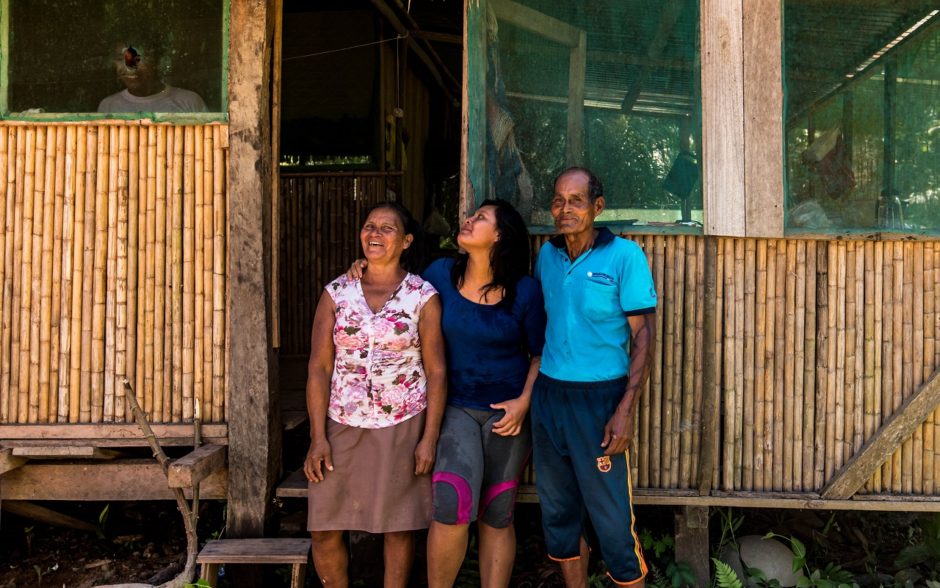
This is Juana and her husband, the family of Walter. Juana is in her late 50’s. They live in the outskirts of the indigenous community Shintuya; part of the Madre de Dios Region in the Peruvian Amazon. They maintain an eco-lodge next to the river and live in a hut not more than 20-steps from some amazing hot springs. She married at 13 years old, had 11 children and lost three boys and two daughters (all under the age of three) due to diarrhea and dehydration; a disease, which in this case, was brought to the community by foreigners. She has five daughters and one son. Struggling to have a strong, living son, Juana, along with her husband, her father, her father-in-law and her one-month old daughter travelled days along the river to visit la roca humana (or human rock). A spiritual rock who speaks to you and to whom you are able to ask anything you need. However, you could only speak to the rock in the early morning or early evening, when no birds sang and there was a true jungle silence. Only then could you speak and ask for your wish. Juana asked to be blessed with a living son. One who wouldn’t die. After almost a four-day journey, they returned home and Juana was blessed with her only living son. Here you can see Juana laughing along with her husband and niece at her son’s antics from inside the window.
Intermission

On our way to the first ranger station, we stayed for a night in Casa Matsigenka, a truly Indigenous community-run eco-lodge, located along the border of the restricted zone of Manú National Park. Before departing, we headed off on a float to this lake, called Cocha Salvador -- an incredible place and wildlife refuge, where all that you could hear was a constant orchestra of animal sounds -- and for the first time, see the primordial forest. From this point on, we were entering a the Restricted Zone of the jungle, a part very few people will get to experience in their lifetime.
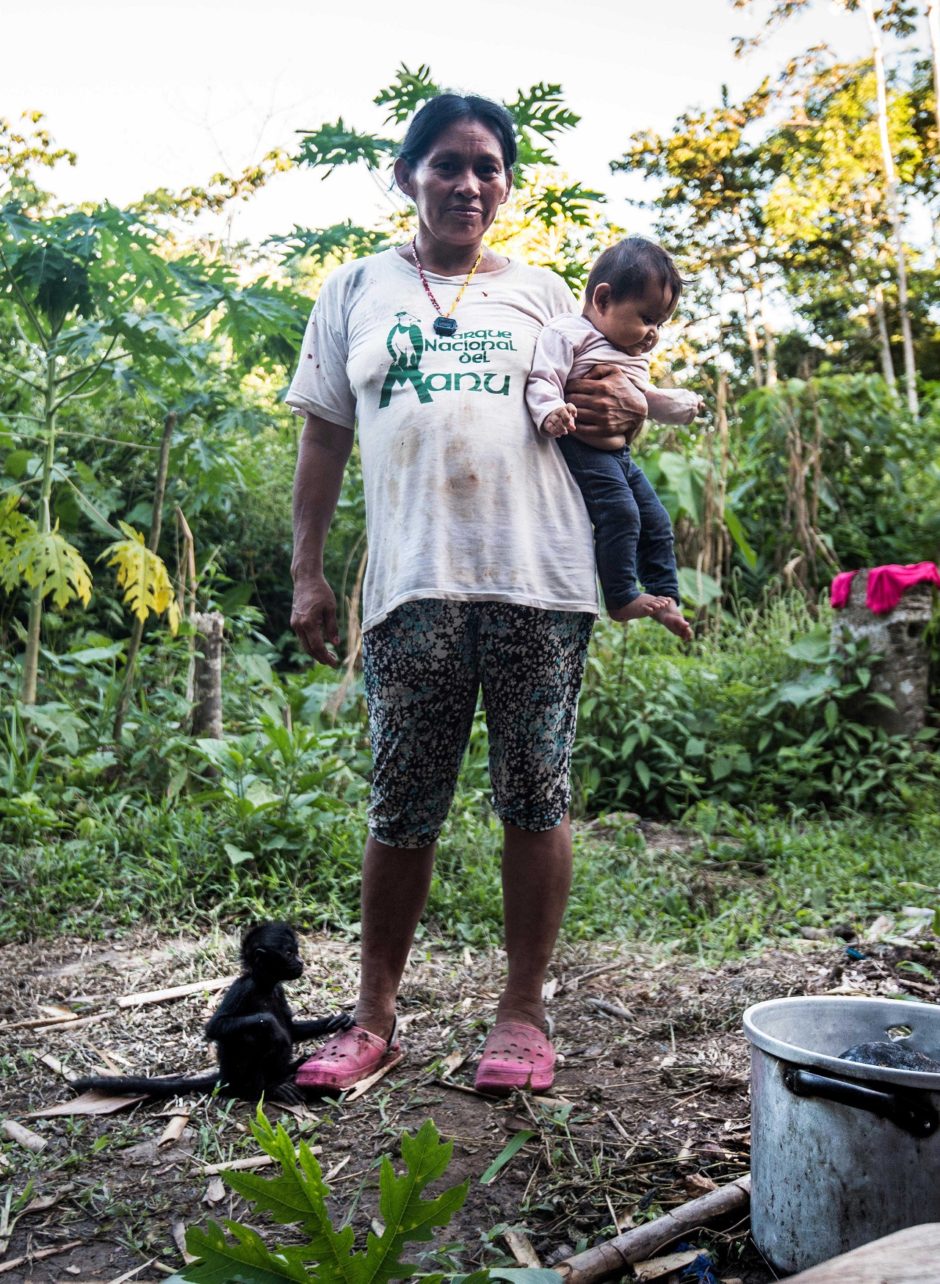
In Tayakome, we arrived during a celebration commemorating the anniversary of their primary school (pre-k to middle school). This woman, Victoria, stands by her family’s chakra, a communal area for cultivation. This area is considered a type of mixed farming, since they can grow up to 30 different types of crops at a time. It is usually located next to their homes and both the men and the women maintain it on a daily basis. At her feet you can see a baby spider monkey, orphaned from a traditional and necessary hunt. When a baby is orphaned, the community raises the monkey as part of their own; forever a beloved pet and never to be harmed or eaten. Often, the women will even breastfeed the babies as they do their own children to ensure their survival and well-being.
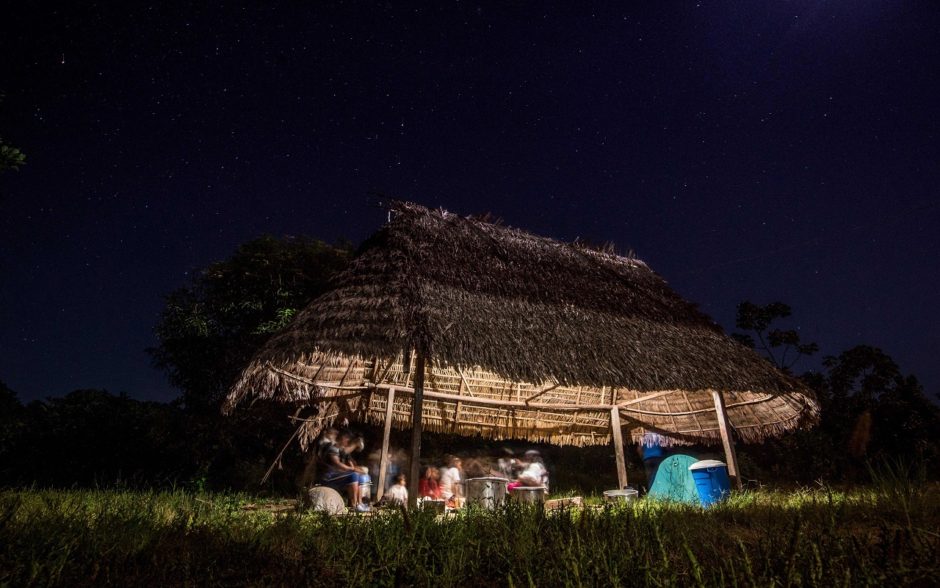
Upon arriving to Tayakome -- the first remote indigenous community along the restricted zone -- we encountered the women hard at work preparing Masato (the communal/celebratory drink) throughout the entire night. In Matsigenka culture, the women in the community find a root called manioc, chew it, spit in it and then cook it to initiate the amylase breakdown of the starch. They then leave it to get fermented for several days; and voila! You’ve made obuiroki, elsewhere known as masato. This method employs ambient microflora to yield a beverage that is nutritionally enhanced and universally shared and enjoyed. To deny an invitation to drink masato, is considered an insult in this culture.
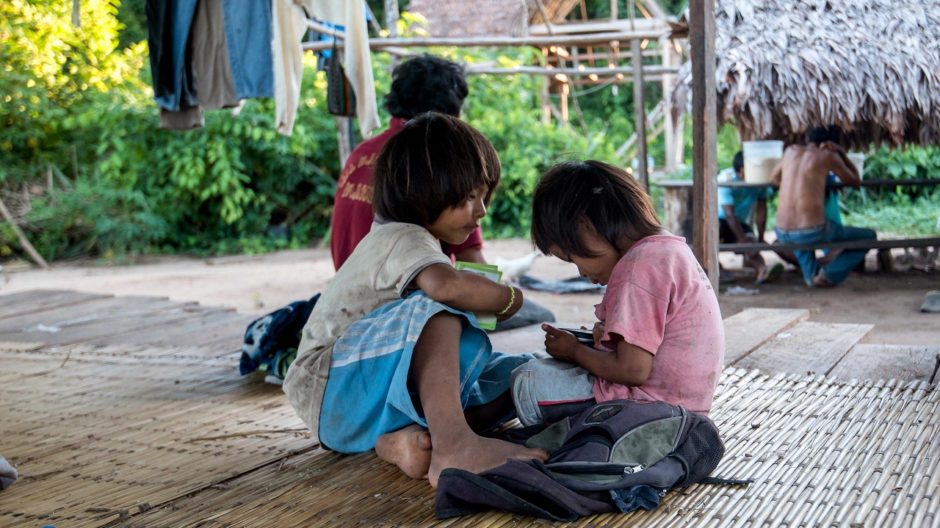
Two kids at the Tayakome community are watching a video on a cellular phone. The members of the remote Matsigenka community of Tayakome, during the last 15-years, have learned what a cellular phone is, even though they cannot use it to call due to the lack of service in the area. Phones are a rare item, and seen as a high-value object. Our team had a scenario where some innocent children took one of our phones and confessed a few days later to having taken the iPhone, opened the up entirely with machetes, and threw each piece in a different location across the community.
Intermission
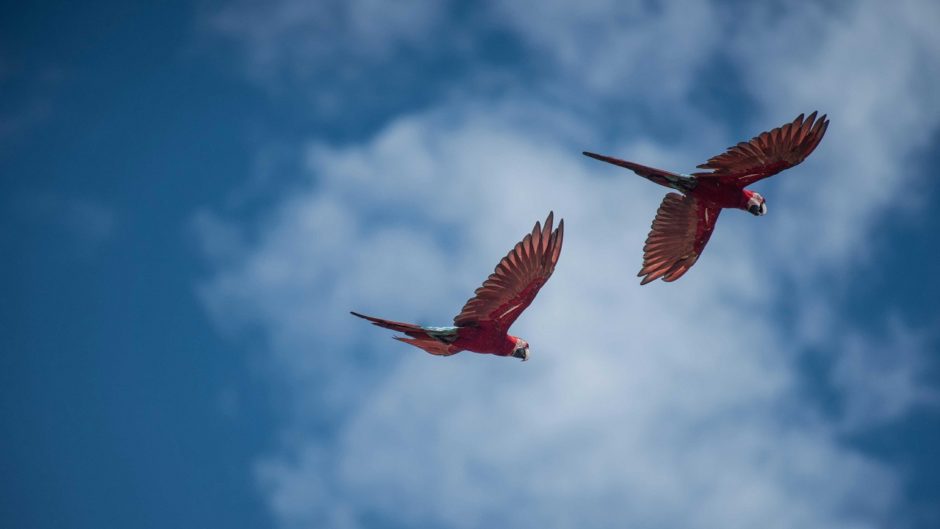
Macaws are intelligent, social birds that are often seen in flocks of 10 to 30 individuals. Their loud calls, squawks, and screams would echo through the forest canopy on a daily basis throughout our journey. Macaws vocalize to communicate within the flock, mark territory, and identify one another. Some species can even mimic human speech. During our journey, their presence was ever present and we recorded their sound on different occasions. This morning, we had just boarded our boat and were on our way to Yomibato, our last and most remote community. We heard them closer than ever before, so I took my camera, looked up and took the shot. The rest was pure bliss.
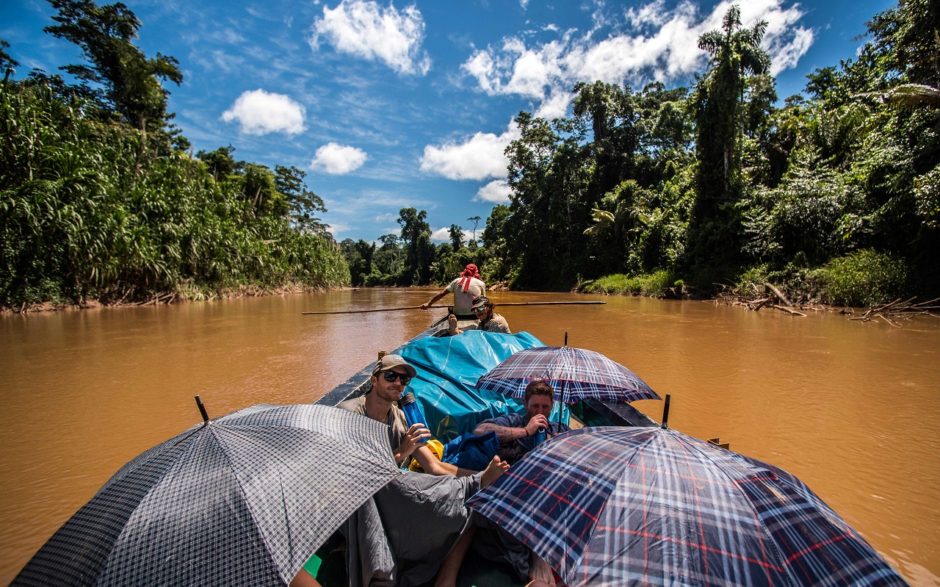
Our team, along with our captains, guides, and cook, totaled 11 people. Along with all of our film equipment, camera gear, and backpacking supplies, our weight was too much for an average boat for our journey, called a Peke a Peke. The team got together, and we agreed on transforming our usual boat (with a weight limit of 5 tons) into the lightest version possible. We removed the roof, took out all of the seats and left as much not-needed equipment (for the next 4 days) in a safe location in Tayakome. We purchased 4 umbrellas and were on our way for the next eight hours through the narrowest and shallowest river canal yet!
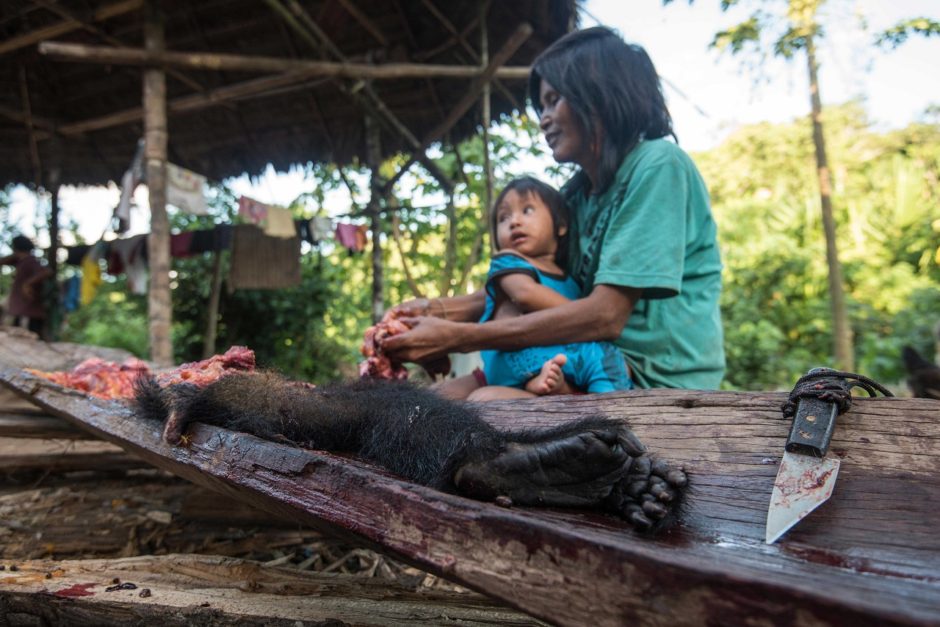
While exploring the Peruvian Amazon along River Fierro (also known as Yomibato River), we came across a native community consisting of only two families, called Cacaotal. We arrived in the nick of time, as the men had just returned home from a successful monkey hunting trip. They hunted four spider monkeys, three females and one baby. The women cut the meat up into sections, boil it to remove fur and cook it wrapped up in leaves for flavor and a smokey taste. Not a single part of this sacred meat is wasted; they use and consume everything besides the fur.
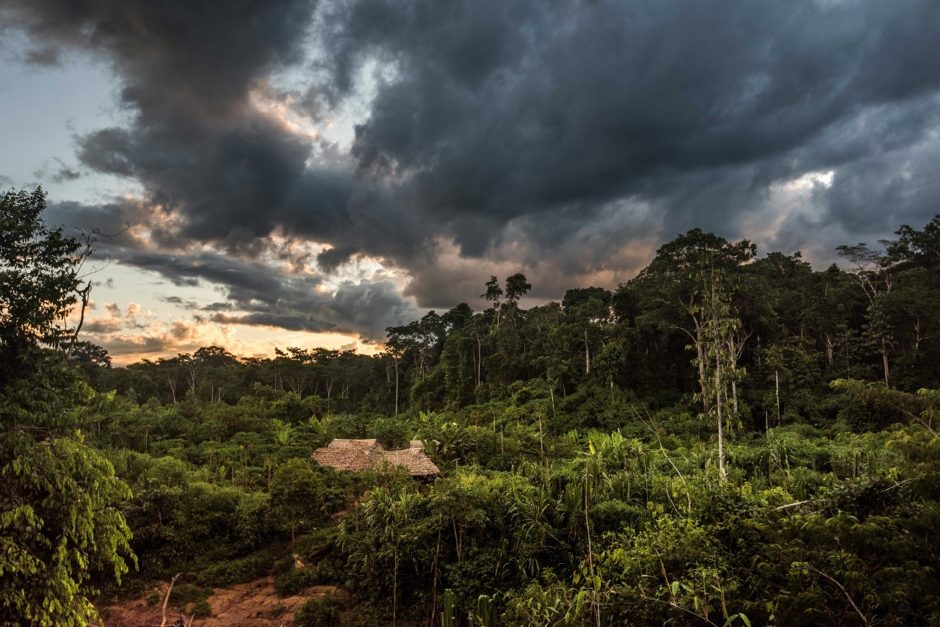
An indigenous family of the Peruvian Amazon live here at their settlement on the route to Yomibato Native Community. This two-family community settled down to live surrounded by the wildest parts of the Manú National Park and a primary rainforest. Even though this is a protected area, the natives are able to build chakras (crop areas) to grow their food. Past this chakra, the jungle has never been tampered with or cut. The natives call it "árboles virgenes", i.e. virgin trees.
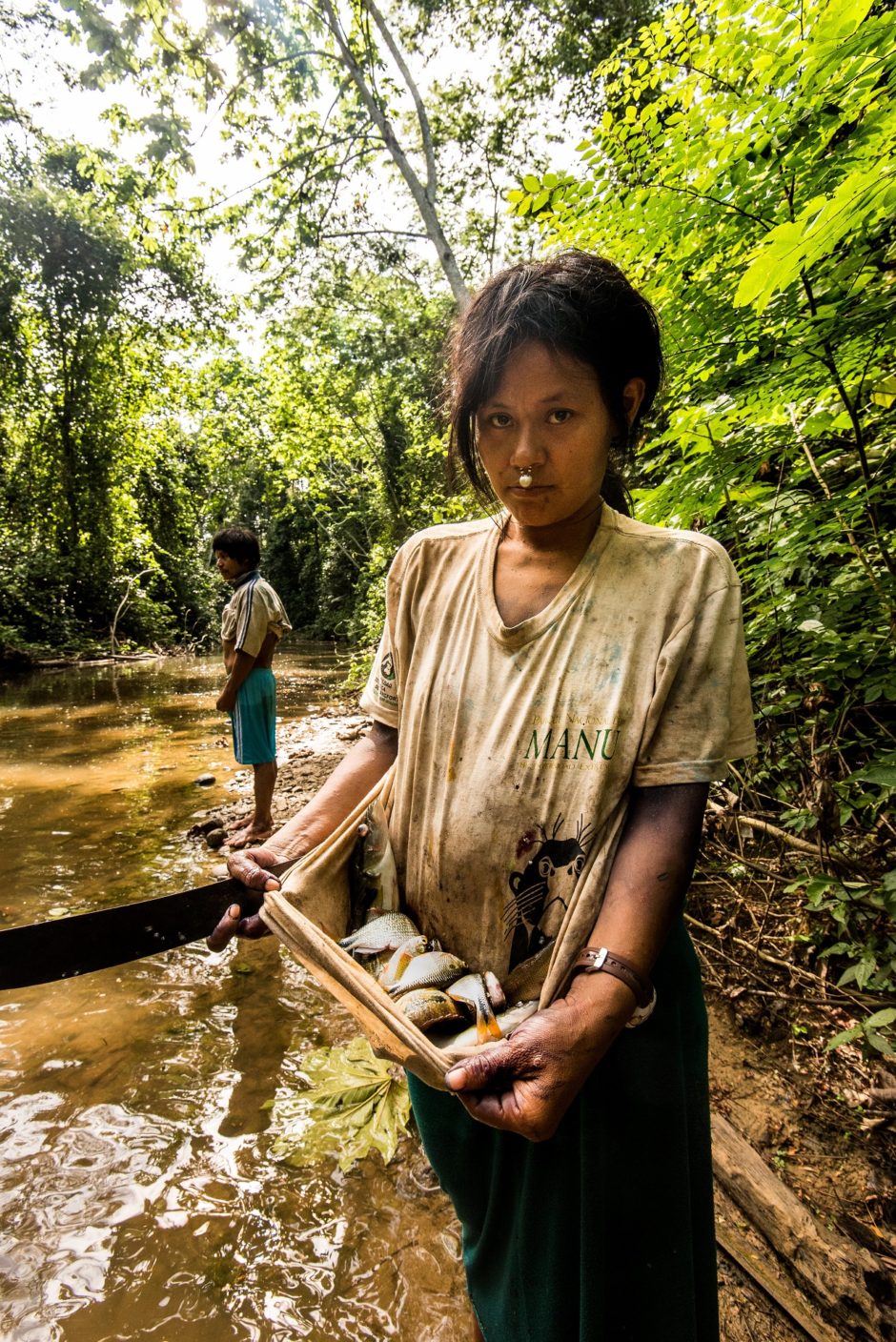
While visiting the native community of Yomibato, one early morning we accompanied two men, Jaime and Cesar, to fish ancestrally. They guided us until we reached a small stream. They use a special plant with large and toxic roots, Barbasco, to stun fish. Using rocks, they mashed the root into pulp, then waded into the stream, dunked the pulp and waited for the fish. Suddenly the whole families of both men appeared to help! Wives, children, grandmother...even the dogs! It truly is a family event. This woman is named Isabel.
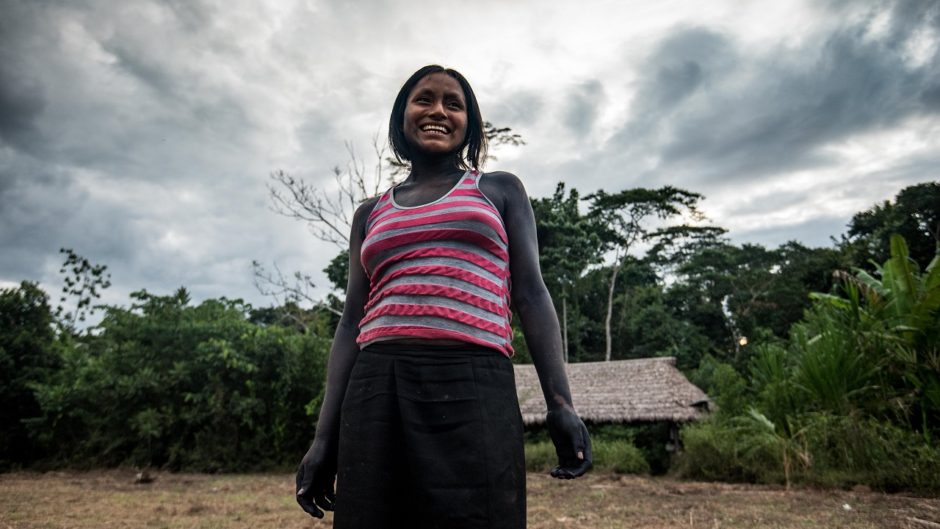
This is Rita, a sweet and determined 19-year old girl who has dreams of one day working her way to become a professional chef. Rita has seven brothers and sisters who all live together with their mother. Rita breaks the community norm since most study nursing, teaching, or medicine. In some communities, these are the only option. At the time of this photo Rita was 4-month pregnant. The pregnancy came at a surprise because her boyfriend and her had been using birth control provided to them by the health post of their community. Her boyfriend currently lives in Puerto Maldonado, the biggest ‘town’ along the Madre de Dios region. They try to radio one another once every week, but the satellite radio is unreliable and had not been working for the last week. Rita plans to stay home through the baby’s first year; then her mother and her have agreed that Rita will travel to Puerto Maldonado, find work, and live with her boyfriend while trying to make her dream of becoming a chef a reality.
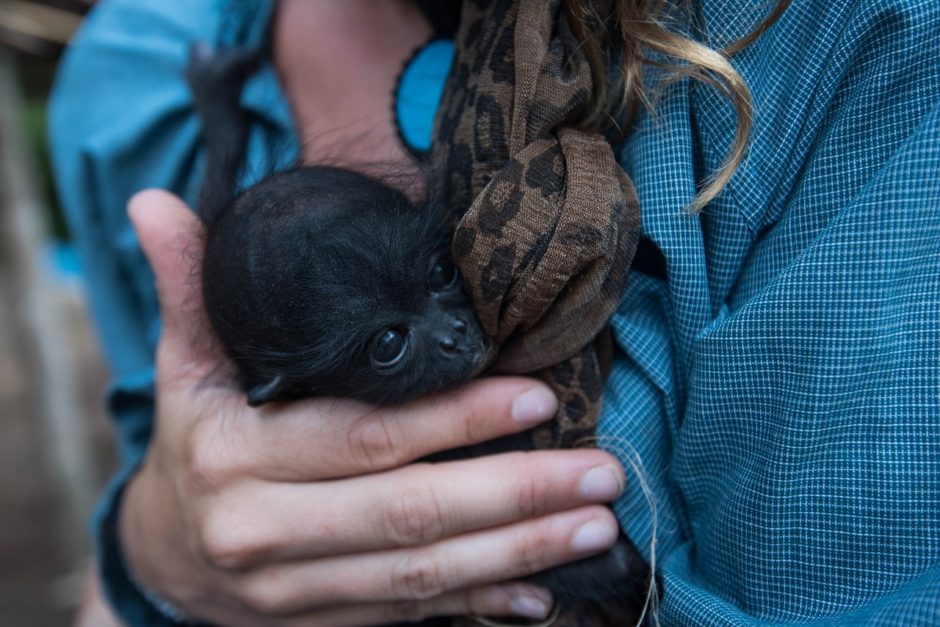
This monkey had a mother that had just been hunted in the two-family community of Cacaotal, along the Yomibato River. This baby was not more than a 1-week old, which the native family will now raise. As part of their domestication process, when it becomes a teenager, if it behaves they keep it and the monkey becomes part of the family. Jestily, we were informed that if the animal doesn’t behave, they might just eat it.
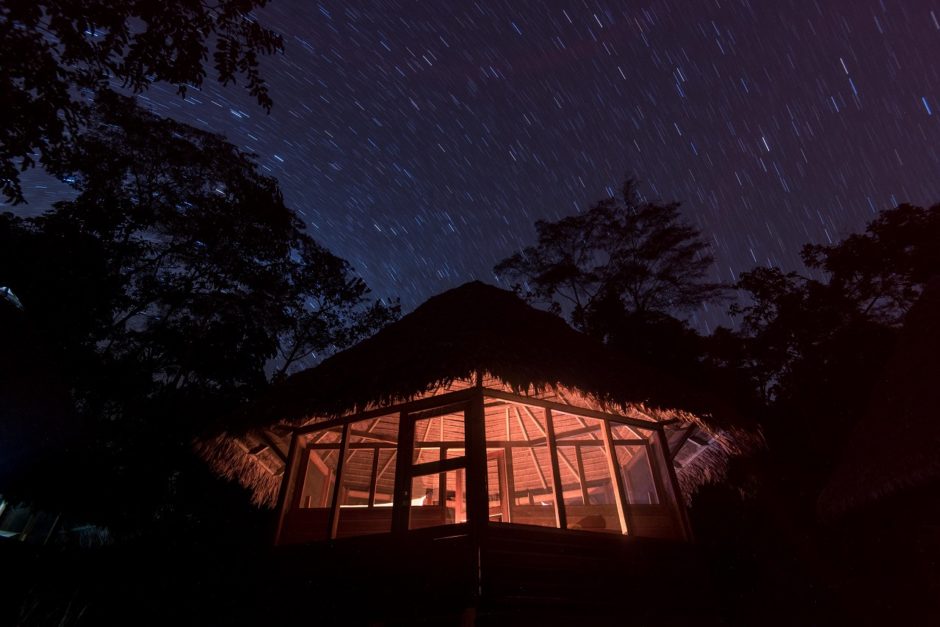
Looking up at night while being deep inside some of the wildest parts of the Peruvian Amazon was more than I could express in words. The Southern Hemisphere looks like a blanket, with no end. Every evening, we would fall asleep to a mixture sound of bird calls, monkey noises, and every animal that comes alive during the night. It was never silent. Our last night staying in the jungle, we went to sleep to the flute tunes of our guide, Dante, and under a thick blanket of stars. In our hut, lit by candlelight, we held our last team meeting in the jungle.
